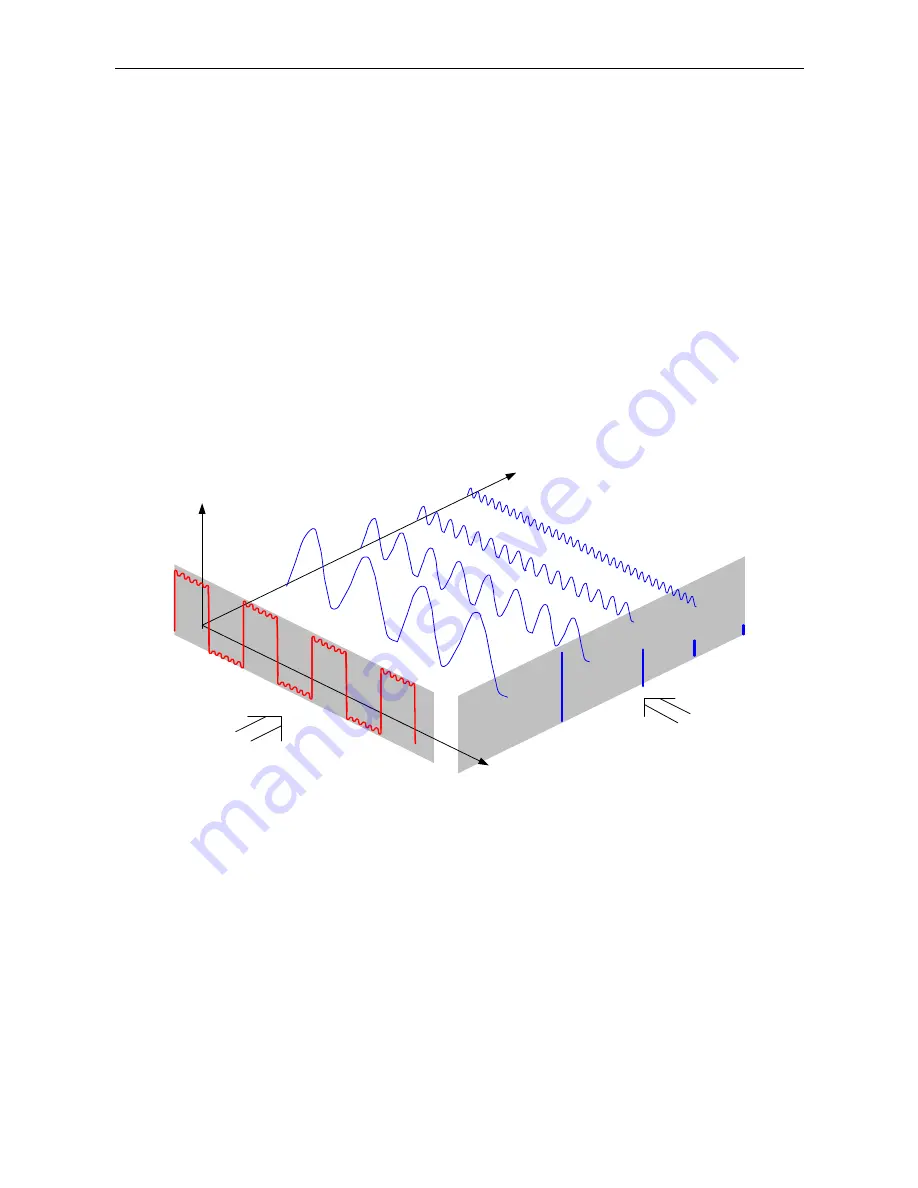
R&S FSH
Measurements
1145.5973.12 4.159
E-14
Measurements
How a spectrum analyzer operates
Basically, an RF signal can either be analyzed in the time domain or in the frequency domain.
In the time domain, how the signal varies with time can be observed on an oscilloscope, for example. In
the frequency domain, a spectrum analyzer can be used to display the frequency components of a
signal.
Both modes are essentially equivalent because applying the Fourier transform to any signal converts it
into its spectral components. However, depending on the signal characteristic to be measured, one
method is usually more appropriate than the other. Just by glancing at an oscilloscope, it is possible to
tell whether a measurement signal is a sine signal, a squarewave with a certain on/off ratio or a
sawtooth. However, it is not at all obvious what the harmonic content of the signal is or if low-level
signals are superimposed. This is easy to see with a spectrum analyzer.
The following Fig. shows the theoretical basis of the two measurement techniques. In the time domain,
an oscilloscope is showing a section of a signal which is approximately a squarewave. The same signal
viewed with a spectrum analyzer shows a line spectrum, i.e. the fundamental and harmonics.
Amplitude
Frequency
Time domain
Frequency domain
Time
The periodic squarewave in the time domain can be Fourier transformed to the frequency domain. In
the case of a squarewave there is a fundamental (= frequency of the squarewave) and its odd
harmonics. Using a narrow bandpass filter, the spectrum analyzer makes measurements in the
frequency domain. Only at frequencies where there is a signal is there a reading which gives the
amplitude of the frequency component.
The block diagram below shows how a spectrum analyzer works.
深圳市盛腾仪器仪表有限公司
Tel:0755-83589391
Fax:0755-83539691
Website: www.Sengt.com





































